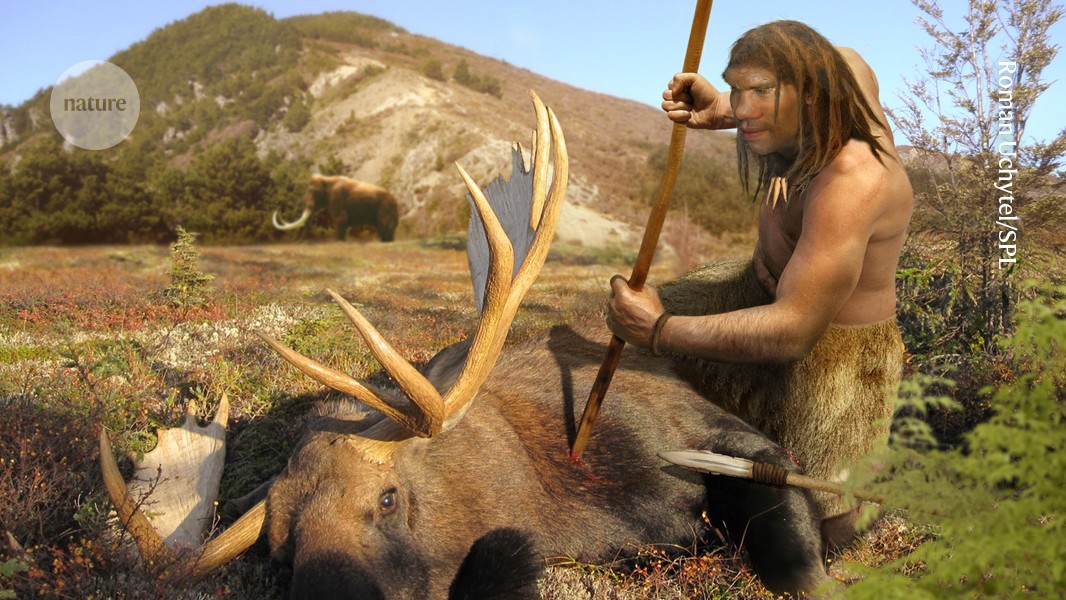Neanderthals might have eaten maggots along with the meat they stored from hunting, researchers say.Credit: Roman Uchytel/Science Photo Library
A mysterious chemical signature seen in the remains of Neanderthals might be explained if they often snacked on a special culinary garnish: maggots. That’s according to research published today in Science Advances1.
The finding adds to the picture that researchers are painting of how our close ancient human relatives provided themselves with nourishment.
Neanderthals and humans interbred more recently than scientists thought
Scientists have long been perplexed by the fact that the bones of Neanderthals (Homo neanderthalensis) from the late Pleistocene (11,700–129,000 years ago) contain a nitrogen isotope at extreme levels2 normally seen in mega-meat-eaters such as hyenas and wolves. The more meat an animal eats, the more nitrogen-15 it stores, and those at the top of the food chain have the highest amounts.
But “our guts are not carnivore guts”, says Bruce Hardy, an anthropologist at Kenyon College in Gambier, Ohio. “Our livers can only do so much to process protein.” So the Neanderthal levels seemed impossibly high.
Melanie Beasley, an anthropologist at Purdue University in West Lafayette, Indiana, and her colleagues wondered whether, instead of gorging on massive quantities of meat, Neanderthals raised their 15N levels by preparing their food in some unique way. Beasley, the lead author of the study, was inspired by historical examples of Indigenous groups consuming putrefied food, as well as the maggots — or fly larvae — that feast on it. Think of fermentation, she says. Putrefaction is similar: “A Westerner might say it’s rotting, but it’s really a method of storing the food to break down the meat,” she adds.
To see whether Neanderthals might have followed the same recipe, Beasley and her colleagues acquired muscle tissue samples from 34 donated human cadavers that had spent two years putrefying at the University of Tennessee, Knoxville’s Forensic Anthropology Center. They found that 15N levels in the flesh rose as it decomposed — and when they sampled hundreds of larvae in the tissue, they measured up to 43 parts per thousand isotope in the maggots compared with up to 8 parts per thousand in the tissue.
Bon appétit
Both results suggest that, if Neanderthals had enjoyed putrefied meat and maggots, it could be a more viable explanation for their puzzlingly high 15N levels than eating impossibly large quantities of meat. And it’s probably a more well-rounded meal than eating just protein, Beasley says. “When you get the lean meat and the fatty maggot, you have a more complete nutrient that you’re consuming.”

